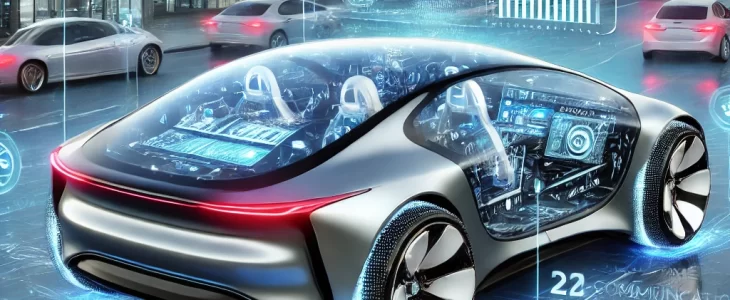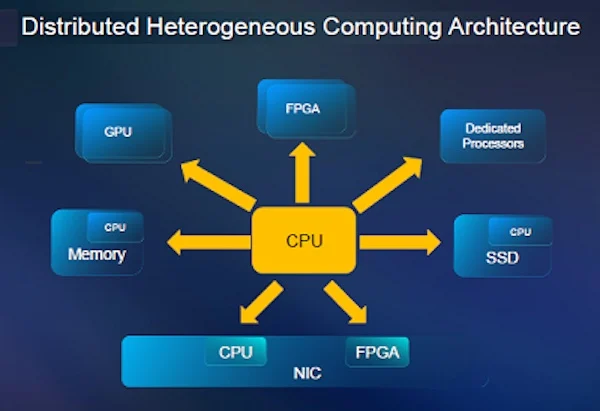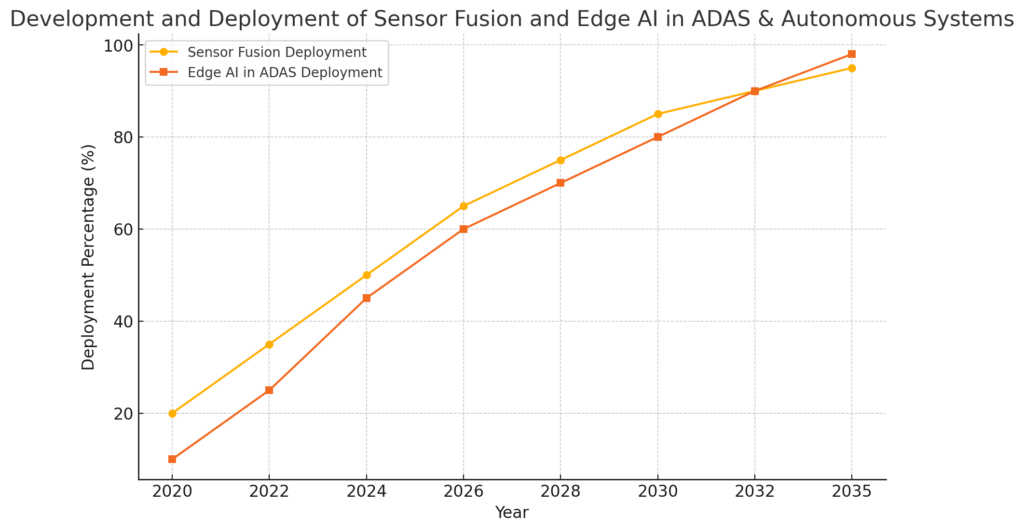
by Bert Templeton
Introduction
The automotive industry is undergoing a profound technological metamorphosis catalyzed by the rapid evolution of semiconductor architectures and electronic systems. The push toward advanced levels of autonomy, real-time vehicular connectivity, and electrification necessitates a paradigm shift in semiconductor design, performance, and integration. As artificial intelligence (AI), high-performance computing (HPC), and novel electronic materials converge, vehicular systems are increasingly characterized by unprecedented computational capabilities, energy efficiency, and safety mechanisms.
This article provides an advanced exploration of semiconductor breakthroughs and their role in the evolution of contemporary and future automotive platforms, emphasizing computational paradigms, power electronics, and sensor-driven intelligence. Additionally, it examines the intricate relationship between semiconductor innovation and key automotive trends such as software-defined vehicles (SDVs), cybersecurity challenges, and the need for sustainable energy solutions.
Semiconductor Architectures and Computational Paradigms
1. System-on-Chip (SoC) Evolution and Heterogeneous Processing Architectures
The exponential growth of automotive computing demands necessitates highly integrated semiconductor architectures that consolidate multiple computational domains onto a single chip. SoC architectures have emerged as the backbone of next-generation vehicular intelligence, offering real-time processing of AI-based perception, sensor fusion, and decision-making algorithms.
- AI-Optimized SoCs: Advanced automotive SoCs developed by leading semiconductor firms such as NVIDIA, Qualcomm, and NXP incorporate multi-core central processing units (CPUs), graphics processing units (GPUs), and tensor processing units (TPUs) optimized for deep learning inference. These platforms facilitate autonomous navigation, high-speed data processing, and advanced driver-assistance systems (ADAS) applications.

- Heterogeneous Computing Paradigms: Modern SoCs integrate digital signal processors (DSPs), neural processing units (NPUs), and vision-processing units (VPUs) to distribute computational workloads efficiently. This synergy between processing cores enhances real-time AI-driven perception and control, which is essential for L4/L5 autonomy.
- Domain-Consolidated Control Units: The transition from discrete ECUs to centralized domain controllers optimizes computational efficiency and power distribution. These controllers support high-speed vehicular networks, over-the-air (OTA) updates, and enhanced cybersecurity frameworks, ensuring long-term software adaptability and operational resilience.
- Energy-Efficient Edge Processing: As software-defined vehicles become the norm, next-generation SoCs incorporate dedicated AI accelerators capable of executing complex tasks at the edge. This reduces reliance on cloud-based computations and improves response times for mission-critical applications.
2. Wide Bandgap (WBG) Semiconductors and Advanced Power Electronics
The advent of wide bandgap semiconductors, including silicon carbide (SiC) and gallium nitride (GaN), has redefined power electronics by significantly improving energy efficiency, thermal performance, and high-voltage tolerance in electric vehicle (EV) architectures.
- SiC-Based Power Modules: SiC transistors, pioneered by entities such as Wolfspeed and STMicroelectronics, offer superior switching efficiencies, reduced conduction losses, and elevated thermal conductivity. These characteristics render SiC-based inverters indispensable in high-voltage traction systems, enhancing energy conversion efficiency and EV range.
- GaN High-Frequency Switching Devices: GaN transistors facilitate ultrafast switching and high-power-density solutions, optimizing the performance of onboard chargers, bidirectional DC-DC converters, and wireless power transfer systems. These technologies accelerate charging cycles and contribute to compact, high-efficiency powertrain architectures.
- Thermal Management Innovations: With increasing power densities, WBG semiconductor implementation necessitates advanced cooling methodologies, such as embedded microchannel liquid cooling, phase-change materials, and advanced thermal interface composites, to ensure component longevity and operational reliability.
- Integration with Renewable Energy Sources: As EV adoption grows, SiC- and GaN-based power modules are being designed for seamless integration with renewable energy sources, such as solar-charging networks and vehicle-to-grid (V2G) applications.
AI-Driven Perception and Sensor-Enhanced Automotive Intelligence
3. Sensor Fusion and Edge AI in ADAS and Autonomous Systems

The proliferation of ADAS and fully autonomous vehicle frameworks mandates cutting-edge semiconductor advancements that enable real-time situational awareness, decision-making, and predictive analytics.
- High-Resolution Radar and Lidar Innovations: Semiconductor leaders such as Texas Instruments and Infineon are pioneering 77 GHz radar systems with enhanced object resolution, while solid-state lidar-on-chip technologies are emerging to provide ultra-high-fidelity environmental mapping and depth perception capabilities.
- Edge AI and Neuromorphic Processing: To mitigate cloud-dependent latencies, edge AI accelerators such as Intel’s Mobileye EyeQ and NVIDIA’s Xavier enable local inferencing, facilitating immediate hazard recognition and adaptive driving responses. Neuromorphic chips further optimize energy efficiency by mimicking synaptic transmission dynamics in biological systems.
- Event-Based and Spiking Neural Network (SNN) Processors: Next-generation semiconductor solutions incorporate event-driven vision sensors and SNN hardware to reduce redundant data processing and improve computational efficiency in dynamic driving conditions, further advancing autonomous capabilities.
- Secure and Redundant Perception Systems: Ensuring redundancy in perception architectures is a critical challenge, prompting the development of multi-modal sensor fusion frameworks with failover mechanisms to guarantee operational safety in uncertain environments.
Emerging Semiconductor Innovations and Computational Advancements
Semiconductor Technologies in Automotive Applications
| Semiconductor Technology | Key Benefits | Major Industry Players |
|---|---|---|
| System-on-Chip (SoC) Integration | High computational efficiency, AI acceleration, and real-time sensor fusion | NVIDIA, Qualcomm, NXP |
| Wide Bandgap Semiconductors (SiC & GaN) | Improved power efficiency, higher voltage operation, and enhanced thermal performance | Wolfspeed, STMicroelectronics |
| Edge AI Processing | Real-time decision-making, reduced cloud dependency, and lower latency | Intel (Mobileye), NVIDIA |
| Quantum Computing | High-speed processing for complex algorithms, real-time data modeling | IBM, Google Quantum, D-Wave |
| Photonic Chips | Ultra-high-speed data transfer, improved V2X communication | Intel, IBM Research |
| Chiplet Architectures | Modular and scalable integration for flexible performance enhancements | AMD, TSMC, Intel |
4. Next-Generation Materials and Computational Architectures
- Photonic Chip Integration: The deployment of silicon photonics for ultra-high-speed data transmission within vehicular networks enhances sensor fusion efficiency and V2X communication reliability, ensuring rapid data exchange with minimal latency.
- Chiplet-Based Architectures: The evolution from monolithic SoCs to chiplet-based modular architectures facilitates scalable computing, allowing for customizable semiconductor integration tailored to specific vehicular functionalities.
- Quantum and Probabilistic Computing Explorations: While in the nascent stage, quantum computing techniques are being explored for their potential in optimizing real-time traffic prediction, autonomous control frameworks, and high-dimensional sensor data processing.
- AI-Defined Hardware Customization: The integration of AI-driven hardware synthesis techniques allows automotive semiconductor designs to adapt dynamically to computational requirements, optimizing power efficiency and reducing latency for safety-critical applications.
![]()
Conclusion
The relentless advancement of semiconductor technologies continues to revolutionize the automotive sector, driving breakthroughs in computational efficiency, energy optimization, and vehicular intelligence. The intersection of AI-accelerated SoCs, WBG semiconductors, neuromorphic processors, and photonic computing heralds a new era of vehicular innovation. However, significant challenges remain, including supply chain stability, semiconductor security fortification, and the development of robust thermal management strategies.
The convergence of semiconductors with cutting-edge automotive technologies also necessitates a multidisciplinary approach to engineering, policy-making, and infrastructure development. As future automotive ecosystems evolve, they will be shaped by continued interdisciplinary innovation, ensuring that semiconductor evolution translates into safer, more efficient, and highly autonomous vehicular platforms that integrate seamlessly with the broader digital and energy landscapes.